

September 17 – 23: “Is the theater standard of a three-act play valid for thriller novels?”
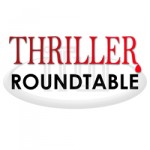 This week we’re joined by ITW Members Jessica Bayliss, J. T. Ellison, Cheryl Hollon, Paul D. Marks, David McCaleb, Arthur Kerns and Maria Alexander as they discuss the question: “Is the theater standard of a three-act play valid for thriller novels?” Click on the names and bookcovers below to learn more about this week’s authors, and scroll down to the “comments” section below to follow along. You won’t want to miss it!
This week we’re joined by ITW Members Jessica Bayliss, J. T. Ellison, Cheryl Hollon, Paul D. Marks, David McCaleb, Arthur Kerns and Maria Alexander as they discuss the question: “Is the theater standard of a three-act play valid for thriller novels?” Click on the names and bookcovers below to learn more about this week’s authors, and scroll down to the “comments” section below to follow along. You won’t want to miss it!
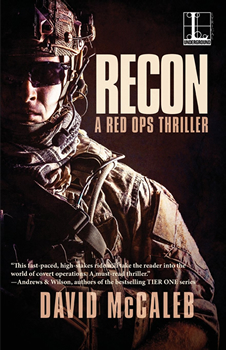 David McCaleb was raised on a rural farm on the Eastern Shore of Virginia. He attended Valley Forge Military College, graduated from the United States Air Force Academy, and served his country as a finance officer. He also founded a bullet manufacturing operation, patented his own invention, and established several businesses. He returned to the Eastern Shore where he works and currently resides with his wife and two children. Though he enjoys drawing, painting, and any project involving the work of hands, his chosen tool is the pen.
David McCaleb was raised on a rural farm on the Eastern Shore of Virginia. He attended Valley Forge Military College, graduated from the United States Air Force Academy, and served his country as a finance officer. He also founded a bullet manufacturing operation, patented his own invention, and established several businesses. He returned to the Eastern Shore where he works and currently resides with his wife and two children. Though he enjoys drawing, painting, and any project involving the work of hands, his chosen tool is the pen.
 Cheryl Hollon writes full-time after an engineering career designing and installing military flight simulators in England, Wales, Australia, Singapore, Taiwan, and India. Living the dream, she combines a love of writing with a passion for creating glass art in the small studio behind her house in St. Petersburg, Florida. Cheryl is President of the Florida Gulf Coast Sisters in Crime, a member of Mystery Writers of America, International Thriller Writers, and Novelists, Inc.
Cheryl Hollon writes full-time after an engineering career designing and installing military flight simulators in England, Wales, Australia, Singapore, Taiwan, and India. Living the dream, she combines a love of writing with a passion for creating glass art in the small studio behind her house in St. Petersburg, Florida. Cheryl is President of the Florida Gulf Coast Sisters in Crime, a member of Mystery Writers of America, International Thriller Writers, and Novelists, Inc.
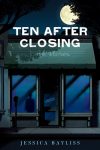 Jessica Bayliss is a clinical psychologist by day and a writer all the time. Author of YA thrillers TEN AFTER CLOSING and BROKEN CHORDS. Her short fiction appears in several anthologies, and she is a Senior Editor for Allegory Magazine. She puts her psychology training to good use in PsychWRITE, a series of workshops for writers. Jessica is a firm believer that coffee makes the world a better place.
Jessica Bayliss is a clinical psychologist by day and a writer all the time. Author of YA thrillers TEN AFTER CLOSING and BROKEN CHORDS. Her short fiction appears in several anthologies, and she is a Senior Editor for Allegory Magazine. She puts her psychology training to good use in PsychWRITE, a series of workshops for writers. Jessica is a firm believer that coffee makes the world a better place.
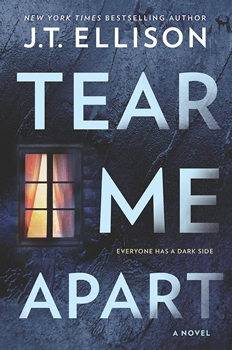 New York Times and USA Today bestselling author J. T. Ellison writes standalone domestic noir and psychological thriller series, the latter starring Nashville Homicide Lt. Taylor Jackson and medical examiner Dr. Samantha Owens, and pens the international thriller series “A Brit in the FBI” with #1 New York Times bestselling author Catherine Coulter. Cohost of the EMMY Award-winning literary television show A Word on Words, Ellison lives in Nashville with her husband and twin kittens.
New York Times and USA Today bestselling author J. T. Ellison writes standalone domestic noir and psychological thriller series, the latter starring Nashville Homicide Lt. Taylor Jackson and medical examiner Dr. Samantha Owens, and pens the international thriller series “A Brit in the FBI” with #1 New York Times bestselling author Catherine Coulter. Cohost of the EMMY Award-winning literary television show A Word on Words, Ellison lives in Nashville with her husband and twin kittens.
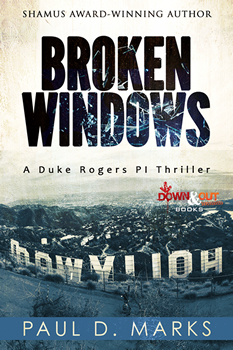 Paul D. Marks has written three novels, co-edited two anthologies and written countless short stories. He’s won a Shamus Award, was voted #1 in Ellery Queen Mystery Magazine’s 2016 Reader’s Choice Award and been nominated for Anthony, Macavity and Derringer Awards. His story “Windward” was chosen for The Best American Mysteries of 2018. His short fiction has been published in Ellery Queen Mystery Magazine, Akashic’s Noir series (St. Louis), Alfred Hitchcock Mystery Magazine, Crimestalker Casebook, Hardluck Stories, Hardboiled, and many others. Paul has served on the boards of the Los Angeles chapters of Sisters in Crime and Mystery Writers of America.
Paul D. Marks has written three novels, co-edited two anthologies and written countless short stories. He’s won a Shamus Award, was voted #1 in Ellery Queen Mystery Magazine’s 2016 Reader’s Choice Award and been nominated for Anthony, Macavity and Derringer Awards. His story “Windward” was chosen for The Best American Mysteries of 2018. His short fiction has been published in Ellery Queen Mystery Magazine, Akashic’s Noir series (St. Louis), Alfred Hitchcock Mystery Magazine, Crimestalker Casebook, Hardluck Stories, Hardboiled, and many others. Paul has served on the boards of the Los Angeles chapters of Sisters in Crime and Mystery Writers of America.
 In March 2013 Diversion Books Inc. released the acclaimed espionage thriller The Riviera Contract, followed by the sequel, The African Contract. The Yemen Contract was released in June 2016. Arthur Kerns joined the FBI with a career in counterintelligence and counterterrorism. On retirement, he became a consultant with a number of US agencies, including the Department of State. His lengthy assignments took him to over 65 countries.
In March 2013 Diversion Books Inc. released the acclaimed espionage thriller The Riviera Contract, followed by the sequel, The African Contract. The Yemen Contract was released in June 2016. Arthur Kerns joined the FBI with a career in counterintelligence and counterterrorism. On retirement, he became a consultant with a number of US agencies, including the Department of State. His lengthy assignments took him to over 65 countries.
 Maria Alexander is a produced screenwriter, games writer, virtual world designer, award-winning copywriter, interactive theatre designer, prolific fiction writer and poet. Since 1999, her stories have appeared in acclaimed publications and anthologies. Her debut novel, Mr. Wicker, won the 2014 Bram Stoker Award for Superior Achievement in a First Novel. Publisher’s Weekly called it, “(a) splendid, bittersweet ode to the ghosts of childhood,” while Library Journal hailed it in a Starred Review as “a horror novel to anticipate.” Her breakout YA novel, Snowed, was unleashed on November 2, 2016, by Raw Dog Screaming Press. It won the 2016 Bram Stoker Award for Superior Achievement in a Young Adult Novel and was nominated for the 2017 Anthony Award for Best Children’s/YA Novel. She’s represented by Alex Slater at Trident Media Group.
Maria Alexander is a produced screenwriter, games writer, virtual world designer, award-winning copywriter, interactive theatre designer, prolific fiction writer and poet. Since 1999, her stories have appeared in acclaimed publications and anthologies. Her debut novel, Mr. Wicker, won the 2014 Bram Stoker Award for Superior Achievement in a First Novel. Publisher’s Weekly called it, “(a) splendid, bittersweet ode to the ghosts of childhood,” while Library Journal hailed it in a Starred Review as “a horror novel to anticipate.” Her breakout YA novel, Snowed, was unleashed on November 2, 2016, by Raw Dog Screaming Press. It won the 2016 Bram Stoker Award for Superior Achievement in a Young Adult Novel and was nominated for the 2017 Anthony Award for Best Children’s/YA Novel. She’s represented by Alex Slater at Trident Media Group.
- LAST GIRL MISSING with K.L. Murphy - July 25, 2024
- CHILD OF DUST with Yigal Zur - July 25, 2024
- THE RAVENWOOD CONSPIRACY with Michael Siverling - July 19, 2024
